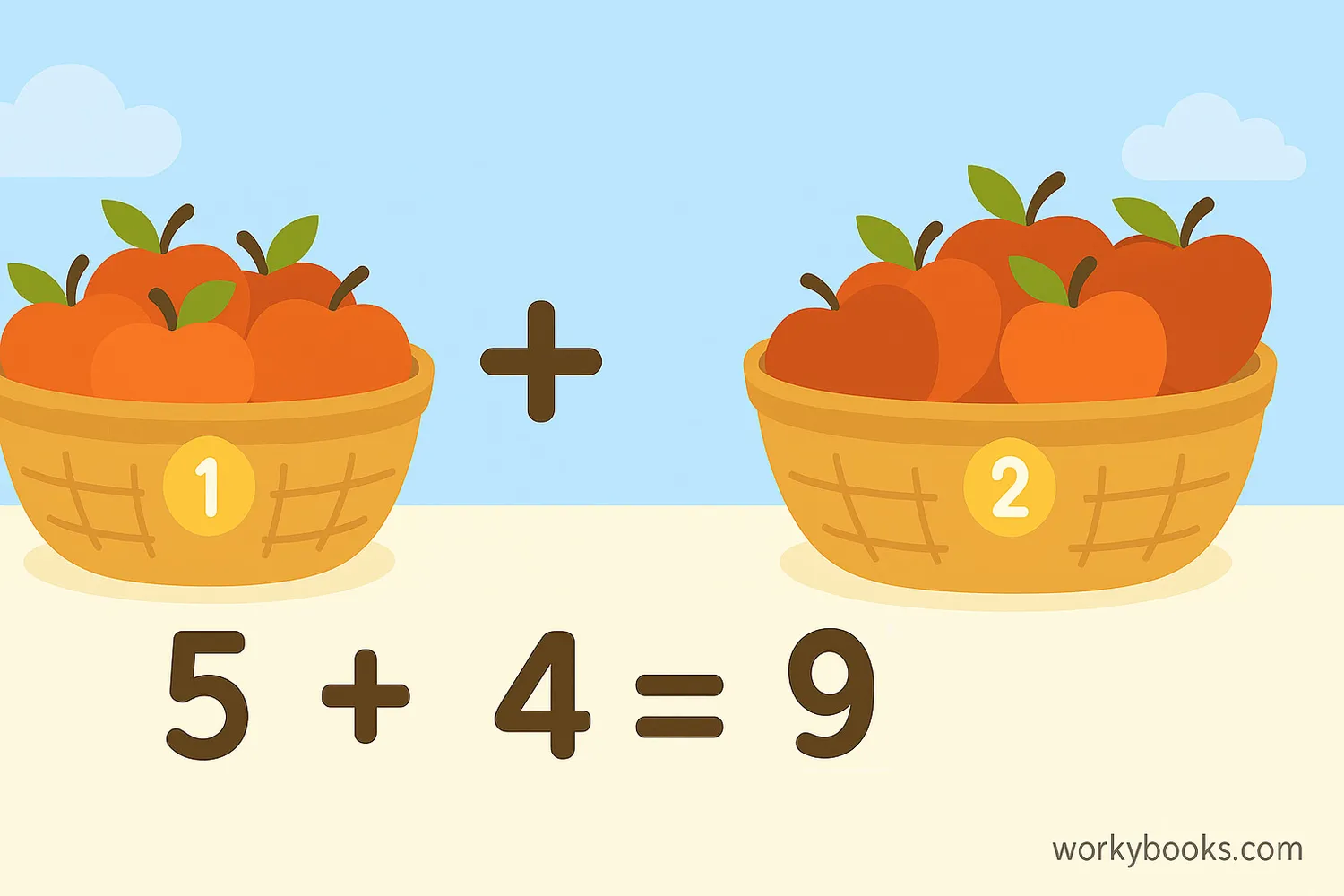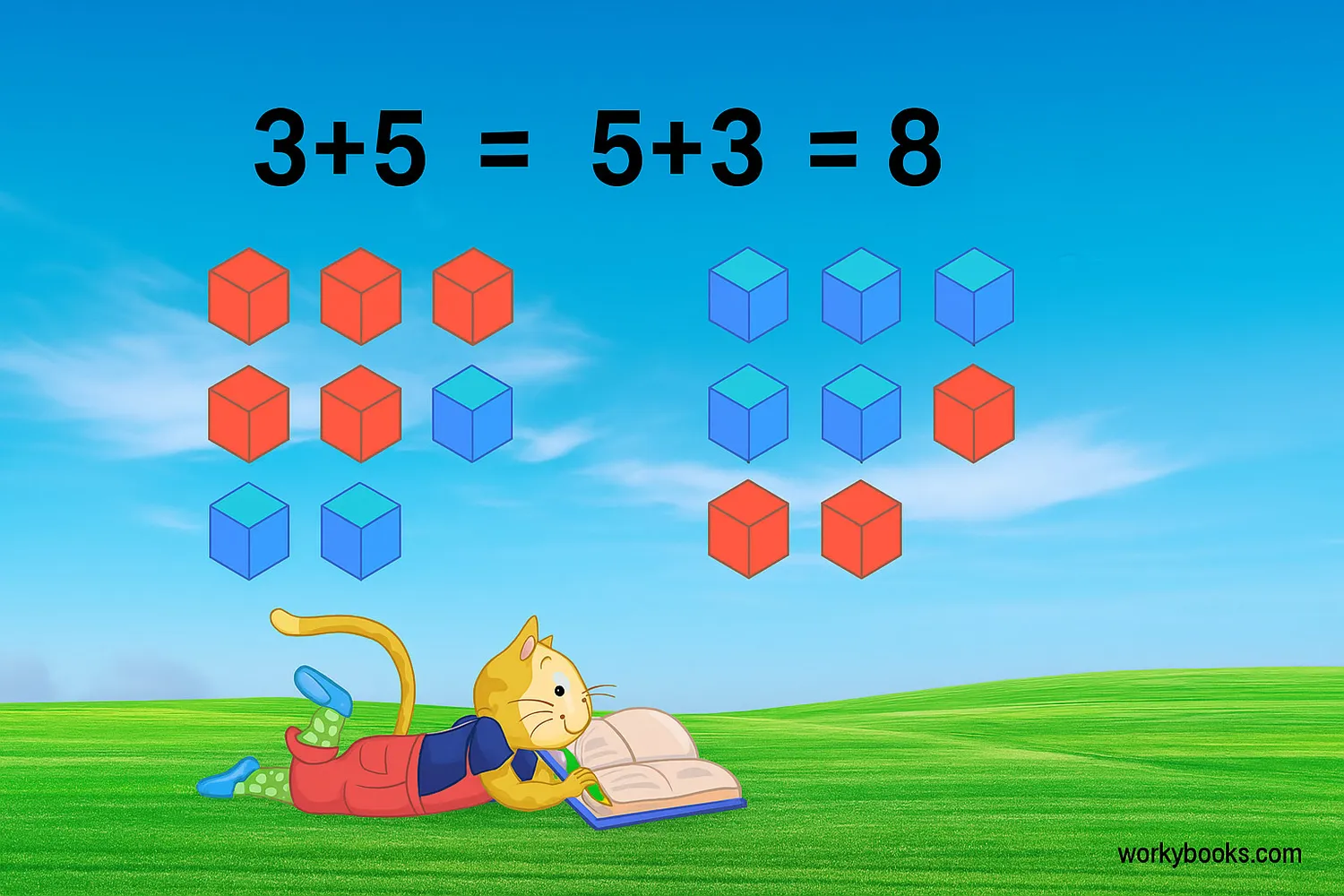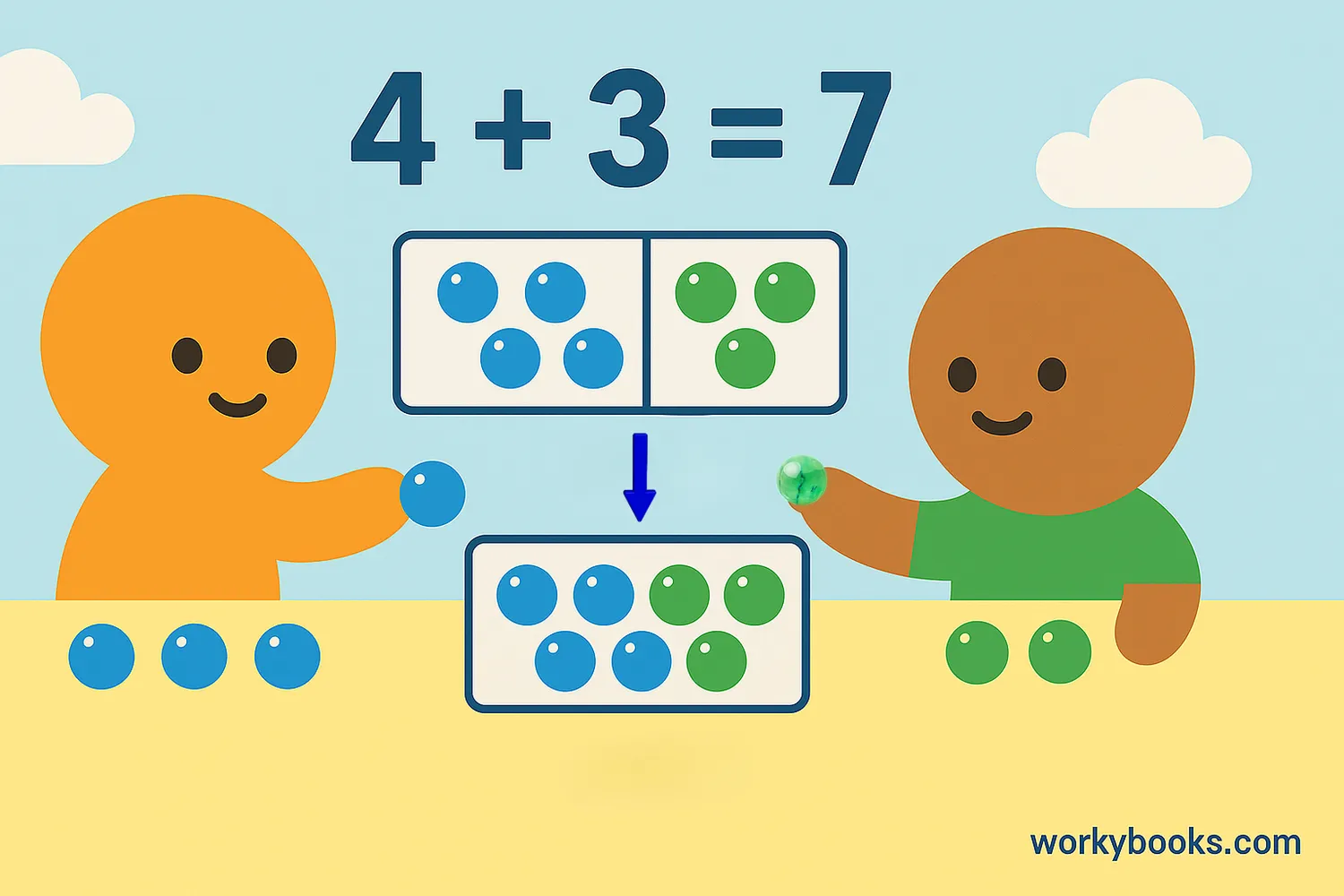Addend - Definition, Examples, Quiz, FAQ, Trivia
Learn about addends with simple explanations, examples, and interactive activities
What is an Addend?

An addend is a number that is added to another number (or numbers) in an addition problem. When we add numbers together, each number we're adding is called an addend.
For example, in the addition problem 3 + 5 = 8:
- 3 is an addend
- 5 is an addend
- 8 is the sum (the result of addition)
Addends can be any numbers - small numbers like 2, big numbers like 1000, or even fractions and decimals! They are the building blocks of addition.
Key Concept
Every number being added in an addition problem is called an addend. The result of adding addends together is called the sum.
Properties of Addition

Addition has special properties that help us solve problems more easily. Let's explore three important properties:
Commutative Property
This property tells us that the order of addends doesn't change the sum. That means:
a + b = b + a
For example: 4 + 7 = 11 and 7 + 4 = 11. The numbers are in a different order, but the sum is the same!
Associative Property
This property tells us that how we group addends doesn't change the sum. That means:
(a + b) + c = a + (b + c)
For example: (2 + 3) + 4 = 5 + 4 = 9 and 2 + (3 + 4) = 2 + 7 = 9. The grouping is different, but the sum is the same!
Additive Identity Property
This property tells us that adding zero to any number doesn't change that number. That means:
a + 0 = a
For example: 8 + 0 = 8 and 0 + 15 = 15. Zero is special because it doesn't change the value of other numbers when added.
Remember
These properties make addition easier and help us solve problems faster. They work with all numbers!
Addend Examples

Let's look at some examples of addends in different situations:
Example 1: Simple addition with two addends
Example 2: Addition with three addends
Example 3: Addition with zero (Additive Identity)
Example 4: Addition with larger numbers
Example 5: Using commutative property
8 + 6 = 14
Practice Tip
Look for addition problems in your daily life - when counting toys, sharing snacks, or measuring ingredients while cooking!
Addend Practice Quiz
Test your understanding of addends with this 5-question quiz. Choose the correct answer for each question.
Frequently Asked Questions
Here are answers to common questions about addends:
Math Trivia
Discover interesting facts about addition and math:
Ancient Addition
The oldest evidence of addition dates back over 20,000 years to the Ishango bone found in Africa, which shows tally marks that may represent addition and multiplication.
The Plus Sign
The "+" symbol for addition was first used in print in 1489 by Johannes Widmann, a German mathematician. Before that, people wrote out the word "plus" or used other symbols.
Adding Large Numbers
The largest number ever added by hand was calculated in 1957 when mathematicians added two 100-digit numbers. Today, computers can add billions of numbers in a single second!
Mental Math Champions
The world record for adding fifteen 10-digit numbers is just 1 minute and 7 seconds! Mental math experts use special techniques to add numbers quickly in their heads.


